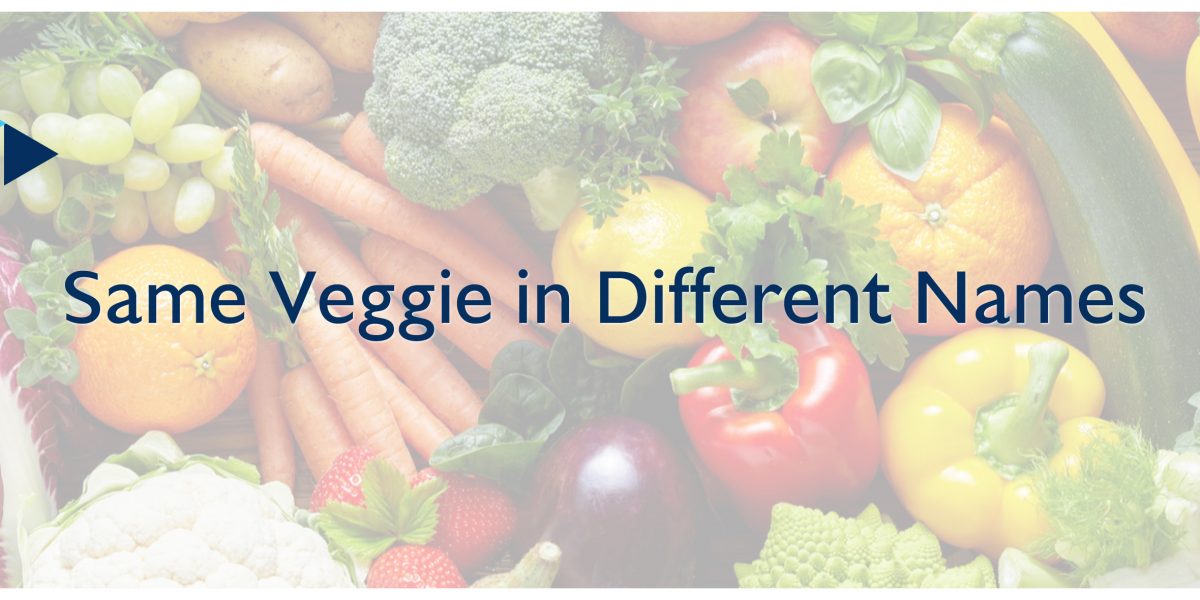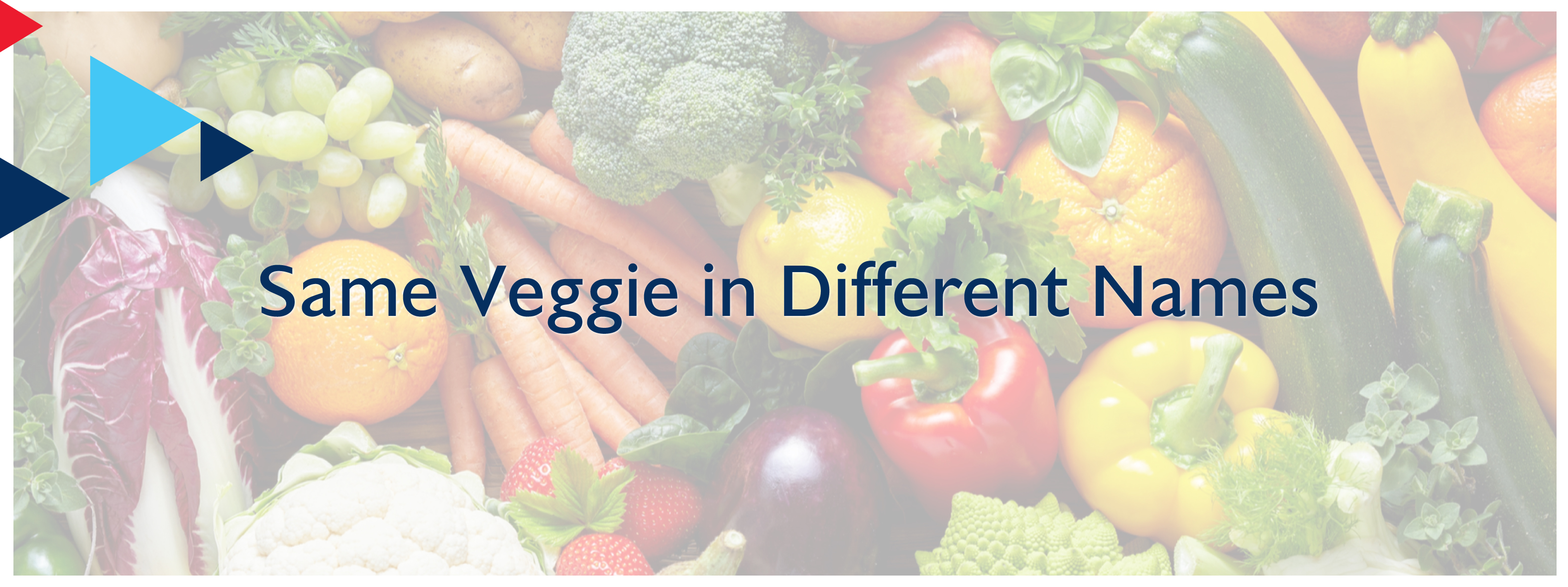
Same Veggies in Different Names – ในคำไทยเราอาจจะมีผักอยุ่หลายชนิดทีเดียวที่เรียกต่างชื่อกันไปในแต่ละภูมิภาค ในภาษาอังกฤษก็เช่นกัน ส่วนหนึ่งมาจากคำ American English และ British English ที่เรียกผักชนิดเดียวกัน แต่ต่างกันตามที่มาของแต่ละวัฒนธรรมในการรับผักชนิดนั้นๆเข้ามาบริโภค หรือด้วยเหตุอื่นๆ โดยไม่จำเป็นว่ารูปคำที่ดูเรียกหรือสะกดง่ายกว่าจะเป็นคำใน American English เสมอไป ในขณะที่บางคำก็เป็นผักต่างชนิดที่หน้าตาคล้ายคลึงกัน พาให้คนพากันเรียกผิดหรือสลับกันบ่อยๆ สร้างความงุนงงให้แม้แต่เจ้าของภาษาเอง เพื่อสุขภาพที่ดีของเราก็ควรกินผักพวกนี้ พร้อมจำคำเหล่านี้ไปซื้อให้ถูก
Thai people in different regions refer to some vegetables with different names, according to their local dialects. Some of the names of vegetables in Thai are similar to their English names. The differences in their names partly result from the dissimilar versions of American and British English. For the case of American English, many names were introduced from the languages of immigrants. Interestingly, it is not always the British English versions of vegetable names that have the most difficult spellings.
This issue brings about confusion not only to Thai students, but also to native speakers of English. Here are five examples.
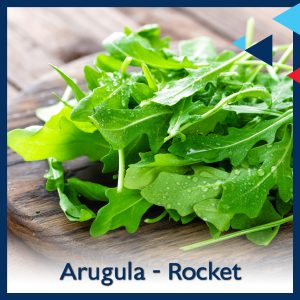
Arugula & Rocket – ทั้งสองคำหมายถึงผักใบที่มักใช้ทำสลัดประเภทเดียวกัน มาจากรากคำละติน eruca ปรากฏการกินกันมาตั้งแต่สมัยโบราณในแถบเมดิเตอร์เรเนียน ที่กลายมาเป็น ruchetta ในภาษาอิตาเลียนโบราณ และ roquette ในภาษาฝรั่งเศส และกลายเป็น rocket ที่ฟังดูชวนให้เด็กกินผักที่รสขมปร่าเล็กน้อยในคำ British English ในที่สุด
ส่วน arugula เป็นคำ American English ที่เพิ่งใช้กันช่วงคริสต์ทศวรรษ 1980s โดยเริ่มจากกลุ่มคนอเมริกันเชืัอสายอิตาเลียน ที่เรียกผักที่กำลังเป็นกระแสนิยมกินกัน และน่าจะมาจากคำอิตาเลียนที่เรียกผักนี้ว่า rucola
Both signify the same kind of peppery green leaves popularly used in salads. Etymologically coming from the Latin root ‘eruca,’ this vegetable has been consumed in Mediterranean regions since ancient times. The name turns to be ‘ruchetta’ in ancient Italian and ‘roquette’ in French, finally adopted in British English as ‘rocket.’
Americans began widely using the term ‘arugula’ in the 1980s, introduced by Italian immigrants and descendants, assumingly following the Italian term ‘rucola.’
Beets & Beetroot – beetroot หรือเรียกอีกอย่างวา table beets หรือ garden beets ซึ่งชาวอเมริกันมักเรียกย่อๆ เพียงแค่ beets คือผักประเภทหัวสีคล้ำออกม่วงแดงที่มักนำมาหั่นใส่สลัดกิน ดอง หรือเป็นแต่งสีอาหารอย่างธรรมชาตินั้น อยู่ในตระกูลเดียวกันกับ sugar beet แต่เป็นคนละประเภท อย่างหลังมักมีหัวสีขาว และใช้สกัดเอาทำน้ำตาลทรายได้ ผลิตมากในทวีปรัสเซีย ยุโรป และอเมริกา ในขณะที่ประเภทหัวสีแดงหรือม่วงอันแรกนั้น ไม่สามารถให้น้ำตาลได้
‘Beetroot,’ also known as ‘table beets’ or ‘garden beets,’ are referred to by Americans simply as ‘beets.’ This vegetable with dark violet bulbs as its roots can be eaten either fresh, cooked, or pickled. It belongs to the same family as ‘sugar beets,’ but with different nutritious and genetic features. The latter has white bulbs, and is planted for the purpose of having its sugar content extracted. Meanwhile, ‘beetroots’ offer no distinct sugar, but can be used for natural coloring.
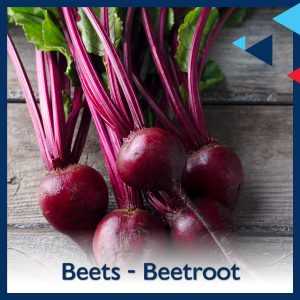
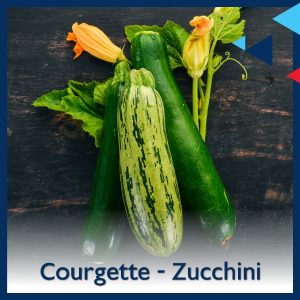
Courgette & Zucchini – โดยพื้นฐานแล้วหมายถึงผักสกุลแตงประเภทหนึ่งเหมือนกัน โดยคำ courgette ใช้กันใน อังกฤษ และนิวซีแลนด์ ส่วน zucchiniใช้ใน แถบอเมริกาเหนือและออสเตรเลีย โดยมีสีเปลือกไล่ไปจากเหลืองถึงเขียวเข้ม เหตุที่เรียกต่างกันสันนิษฐานว่าทางฝั่งอังกฤษรับมาจากคำฝรั่งเศส ส่วนฝั่งอเมริการับจ่ายผู้อพยพเชื้อสายอิตาเลียนที่ใช้ผักชนิดนี้ในการปรุงอาหารมาก
ส่วนอีกนิยามนึงก็คือ courgette จะใช้เรียกผลอ่อนที่มีขนาดเล็กระหว่าง 4 – 14 เซนติเมตร ขนาดประมาณแท่งซิการ์ ถ้ามีแก่หน่อยและขนาดใหญ่กว่านั้นจเรียก zucchini แต่ถ้ามีผลโตมากก็จะเรียกว่า marrow ทั้งหมดนี้สามารถกินดิบได้ แต่ติดรสฝาดบ้าง จึงนิยมมาปรุงให้สุกนิดหน่อย
Basically, both are edible forms of the cucurbit plant. The word ‘courgette’ is used among British and New Zealand people, while that of ‘zucchini’ is used in North America and Australia. Its skin colors can be varied from yellow to dark green. These different names in English presumably come from the French loanword for the former, and from Italian for the latter.
Another distinction deals with the matter of sizes. Courgettes are the young finger-size ones with a length of between 4 to 14 centimeters. Zucchinis are larger. The very large ones can also be called ‘marrow.’
Scallion & Spring Onion – ผักที่มีหัวขาวเล็กอยู่บริเวณรากที่นำมาปรุงอาหารได้ด้วยกันพร้อมกับตัวใบเขียวเรียวยาวประเภทหนึ่งนี้ เป็นอีกกลุ่มคำที่มักสับสนกันว่าใช้สิ่งเดียวกันหรือไม่ แต่ที่จริงคือไม่ เพียงแต่รูปร่างหน้าตาคล้ายกัน (ทั้งนี้ scallion คือผักชนิดเดียวกันกับ green onion เพียงแต่ต้นและหัวอ่อนกว่า)
ข้อแตกต่างของทั้งคู่มีดังนี้ ในด้านรูปร่าง scallion จะลำต้นส่วนรากจะตรงเรียวไม่อวบโตไปกว่าส่วนใบเท่าใด ส่วนราก spring onion จะนูนเป็นหัวออกมา บางพันธ์หัวสีออกแดงม่วง ในด้านการปลูก scallion มีให้กินตลอดทั้งปี แต่ spring onion ปลูกโดยใช้เมล็ดและโตเป็นต้นให้ได้กินในช่วงฤดูใบไม้ผลิ ถึงได้ชื่อว่า spring onion ส่วนด้านรสชาติ spring onion จะหวานและมีน้ำฉ่ำในลำต้นมากกว่า
ที่มักสับสนกันเพราะว่า scallion มักถูกเรียกว่า spring onion ในบางประเทศอย่างแคนาดาและอังกฤษ แต่ในสหรัฐอเมริกาเป็นผักต่างชนิดกัน
ทั้งนี้ยังมีต้นกระเทียม leek ที่ดูคล้ายเช่นกัน แต่ส่วนล่างใกล้หัวและรากจะมีบริเวณสีขาวยาวมากกว่าสองต้นที่กล่าวมา อีกทั้งใบยังแข็งและมีกลิ่นที่ฉุนมากกว่า ส่วน chive เป็นอีกชนิดที่ใช้กินส่วนใบที่เล็กเรียวและแข็งกว่าอันอื่นเป็นหลัก โดยมักใช้โรยหน้า บางตำราจัดเป็นผักสมุนไพร ส่วนดอกก็กินได้ มีรสคล้ายกุยช่ายที่คนไทยกินกัน ซึ่งเรียกว่า Chinese chive
ทั้งนี้ ผักทุกคำที่กล่าวมามักจะเขียนด้วยตัวอักษร s เติมท้ายในรูปพหูพจน์ เนื่องจากมักใช้หลายๆต้นเวลาทำอาหาร
Both look alike, but are not the same thing. In comparison to scallions, spring onions have smaller bulbs with a more mellow and sweeter taste, while its green leaves are more pungent. The distinction is its harvesting season during the spring, which is the origin of its name, while scallions are available throughout the year. Nonetheless, scallions are sometimes called spring onions in the UK and Canada. Another confusion comes because scallions look the same as green onions when they are young.
Leeks and chives are share a similar configuration of having green leaves with a white stalk at the base. The former has a garlic-like taste and with longer stalks than others, while the latter has slimmer stalks and bulbs with a bit harder texture.
All terms usually appear in the plural form with -s at their end due to the use of many of them at the same time in cooking.
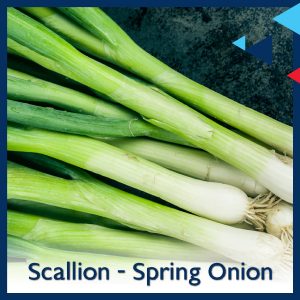
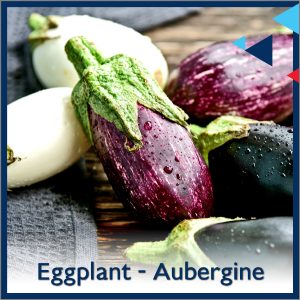
Eggplant & Aubergine – ทั้งสองคำคือมะเชือยาวฝรั่งที่มักมีเปลือกผิวสีคล้ำ โดยมากมักมีสีม่วงเข้ม อย่างที่เรียกว่า มะเขือม่วง มีถิ่นกำเนิดจากแถบอินเดีย คำแรกที่ดูจะเรียกง่ายใช้กันในสหรัฐอเมริกา ส่วนคำหลังนิยมใช้กันในอังกฤษ โดยมาจากรากคำฝรั่งเศส ส่วนที่มาของคำ eggplant มาจากที่ในราวคริสต์ศตวรรษที่ 18 ชาวอเมริกันเรียกผลของสายพันธ์มะเชือชนิดนี้ที่มีสีขาวและออกเหลืองที่กลมแป้นคล้ายไข่ห่าน
Both are the same vegetable regularly appearing with dark skin, usually a dark violet, with their origin from the Indian subcontinent. While Americans call it ‘eggplant,’ the British call it ‘aubergine’ following the origin of the French term. One assumption about the coining of the term ‘eggplant’ is that Americans in the 18th century compared the white and yellow versions to similarly appearing goose eggs.




